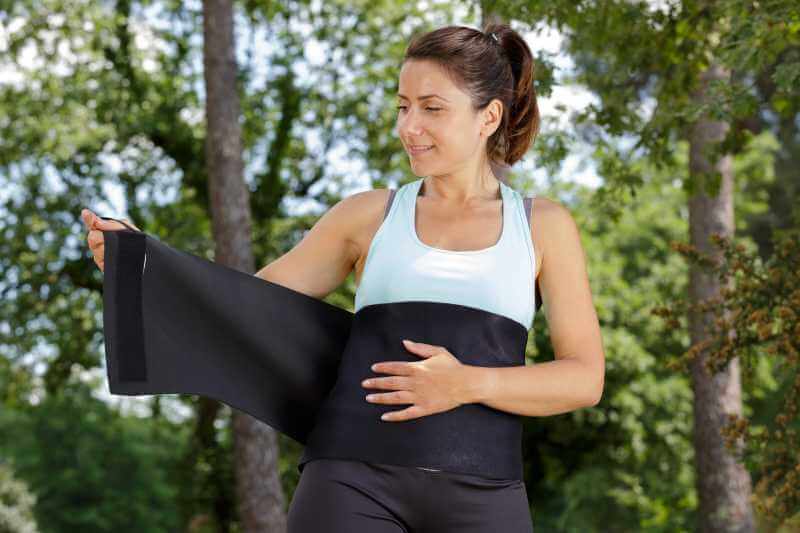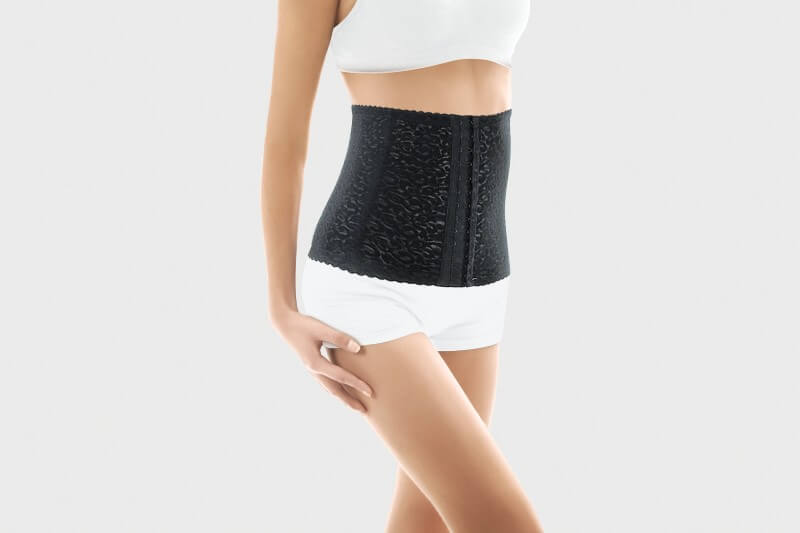Gym experts and medical practitioners agree that a waist trainer can help you achieve the fabled “hourglass body shape.”
As effective as waist trainers may be, it’s essential to realize that it takes time to reduce your midsection. Depending on your dedication and devotion to utilizing a waist trainer, the period could be anything from weeks to months or even years.
So, how tight should a waist trainer be? The ideal fit of a waist trainer is tight but not overly tight. You’re unlikely to achieve the intended outcome if it’s excessively loose. However, if it’s extremely tight, it just becomes problematic.
So how is a waist trainer supposed to fit, and where should a waist trainer sit? Read on to discover!
How To Select the Best Fit Trainer
Selecting the right and proper size when purchasing a waist trainer is critical. A waist trainer that’s too tight or too loose will be ineffective. So, are there any general rules of thumb?
If you’re a novice or unfamiliar with purchasing waist trainers, below are a few easy steps to follow when shopping for one.
Measure Yourself
Contrary to popular opinion, waist trainers don’t occur in a “one size fits all” style. Customers must consider fit and match up when selecting a body waist trainer.

You could consider going old school and trying to fit on collections on display to get the ideal fit. Consider obtaining your measurements when shopping online.
Remember to measure the overall length of your natural waist. Also, check to see how big your waist, bust, torso, underbust, and perhaps even the hips are.
Go up a Size
If you have any doubts about the waist trainer, it’s best to size up. If the garment isn’t your ideal size but looks slightly loose, it will still be snug enough to fulfill its role. However, if you purchase a small size, you’ll be uncomfortable and may injure yourself or cause great harm.
Try the First Hook
Consider this:
- It may be too big for you if you can effortlessly hook it.
- If you’re having trouble latching the first hook, the waist trainer is too small or rigid for your body.
- If you’re able to tuck the first hook of that waist trainer, despite a bit of difficulty, you’ve most likely found the correct size.
Breathe!
Often, most customers who have fitted a tight waist trainer have voiced concerns about breathlessness. It occurs because wearing an overly tight waist trainer but not snug constricts your torso and could result in breathing problems.

Begin your search by trying different sets to determine which piece doesn’t aggravate breathing problems.
Different Compression Levels
Are you torn between overbust vs underbust corsets? Well, waist trainers are available in various compression levels to assist you in accomplishing your objectives.
The greater the compression, the tighter the apparel conforms, providing the most effective waist training. The lesser the level of compression, the more snugly the clothing fits while maintaining a sleeker, smoother-lined shape.
The following are some varying compression levels to help you decide how tight a waist trainer should be, primarily focused on your requirements.
Low Compression
Waist trainers with a low compression level are ideal and most suited for first-timers. They guarantee more comfort, are stretchy, and allow for more breathable options with a greater range of motion. Anyone seeking to slim down gently, such as after giving birth, should consider this compression level.
Moderate Compression
Are you looking for the best waist trainer for regular daily use and can complement any outfit? Then a moderate compression level waist trainer is your ideal choice.

This design can be employed as an aspect of wearing a waist trainer while working out or as regular shapewear.
High Compression
You can achieve significant slimming effects by wearing a high-compression waist trainer. It ranks as an excellent choice for those with prior experience in waist training and a desire to advance their technique.
Maximum Compression
Sometimes you just must go the extra mile. Hence, a maximum compression level waist trainer will guarantee the most effectiveness possible for a wedding ceremony or any other high-profile occasion.
Adjustable Compression
The optimum extent of compression individuals need can differ significantly. This would necessitate an adjustable compression level such as those offered by steel-boned corsets. They’re strong contenders for delivering exceptional compression that’s additionally customizable continuously.
What Happens If I Wear a Trainer with a Tight Waist?
A subpar waist trainer could have several detrimental repercussions on your health. The following are among the negative effects of waist trainers:
Feel Dizzy
Breathing becomes more difficult while wearing a waist trainer, especially if the waist trainer is too small. Wearing a waist trainer reduces maximal voluntary ventilation (MVV), or the air quantity you can inhale and exhale in one minute, according to a small study published in 2018.

According to the American Board of Cosmetic Surgery (ABCS), the drop in lung capacity is significantly more likely to range between 30 and 60% when wearing an extremely tight waist trainer.
Utilizing a waist trainer hinders the ability of the body to absorb all of the oxygen it necessitates despite the proportion drop. That might be risky, particularly if you wear a waist trainer while working out.
Additional oxygen is needed during exercise, not decreased. You could have fatigue, shortness of breath, or dizzy spells when you don’t have enough. You might even pass out.
Muscle Weakness
When you waist train, your musculoskeletal system is put in danger. Your spine is made up of several components called vertebrae. Since they’re unique, you can use them to move across various ranges of motion.
If a waist trainer is too small, the auxiliary muscles may get a signal to adjust for a compressed diaphragm. They’ll gradually fade down because they weren’t designed to move the ribcage numerous times daily, which can cause neck pain, migraines, and jaw pain.
Reshaped Bones
Human bones may be compelled to rearrange and adjust artificially and disturbingly if subjected to excessive strain. The two bottom ribs, often known as “floating ribs,” are the only two bones that can be contoured when wearing a belly belt.
Damaged Organs
The capacity to move flexibly is crucial to an organ’s functional status. Your internal organs, like your bones, liver, kidney, etc., will be in danger if your tummy belt is excessively tight. Internal organs may get aggravated if extra compression is applied, adding undue stress.
Also, the rear and core muscles shut off due to limited mobility. This loss of motion leads to muscular compensation and over-dependence on the waist trainer.

Bruising
Unsurprisingly, wearing a trainer that’s considered too tiny for you will result in some scars and imprints or a rash from the waist trainer on the skin due to sweat retention. The trainer will squeeze your body, which can result in bone bruising.
Unproductivity
The inconvenience you would experience while wearing a tight waist strainer could make it difficult to move through your day and complete activities. It could also impact your mental health, making you agitated, insecure, and self-conscious.
How Do You Tell If Your Waist Trainer Is Too Large?
While detecting a tight waist trainer is simple, it can occasionally be challenging. Here’s how to determine whether your waist trainer is too large for you.
- It Will Appear Sloppy
A huge waist trainer’s initial warning flag is that it will appear untidy. You’ll notice minor lumps or misalignment if you wear a dress or other attire over a waist trainer that’s too large for you. The waist trainer tends to stick out.
However, remember to learn the correct method of wearing a trainer. For example, how to put on a velcro waist trainer may vary from one with hooks.
- Will Not Achieve the Desired Shape
The waist must be constricted to achieve the hourglass impression when wearing a waist trainer. However, you won’t accomplish that contour if the waist trainer is too large. Instead, you’ll notice a more boxy appearance that’s less aesthetically pleasing.
- Bulky
Utilizing a waist trainer is about looking trim, especially around the middle. Choosing the appropriate fit is crucial for this same purpose. The midsection won’t appear trim when you buy a waist trainer too large. Instead, your appearance gets bulkier.

Is Waist Training Safe?
The question of whether is wearing a waist trainer bad depends on fitting. If you pay attention to your body and act rationally, waist training is safe and comparable to any other health and wellness habit. You shouldn’t feel physical discomfort while waist training if your apparel matches you.
Also, you may wonder can wearing a waist trainer cause miscarriage. Waist training is prohibited during pregnancy. It may result in a miscarriage while endangering the baby and you. It’s only an effective way to boost your esteem in your postpartum body.
How Can You Tell If Your Waist Trainer Is Too Tight?
There are several indicators to look out for to determine whether it was nearly the ideal fit but wasn’t quite the one:
- If your waist trainer rolls up your body as you move.
- When you remove them, see whether you experience severe pain or discomfort.
- If while wearing it, you experience any intense stabbing pain in your abdomen or any other form of pain.
- If there are any bulges in your waist trainer, the hooks appear to be struggling to stay in place before breaking.
- Regardless of their depth, your body may have been marked by the enclosures, exterior seams, or inside steel bones.
Conclusion
A waist trainer is a fantastic way to commit to your daily routine. In addition to being a terrific way to get in shape, it could also contribute to the attainment of your ideal posture, regulate your nutrition, and remain on course with your workout routine. The greatest benefit is that you can exercise your midsection at any time of the day.
You can wear a waist trainer when running errands or even to work. You may keep waist training while also doing housework or cleaning up after your kids, roommates, or spouse—and you won’t feel forced to skip your workout. The most important thing is to choose a waist trainer that works for you and get started.

I’m a triathlete and life coach, with a focus on holistic health, fitness & women’s issues.
I also write about my gastronomic adventures and my love for the outdoors.

